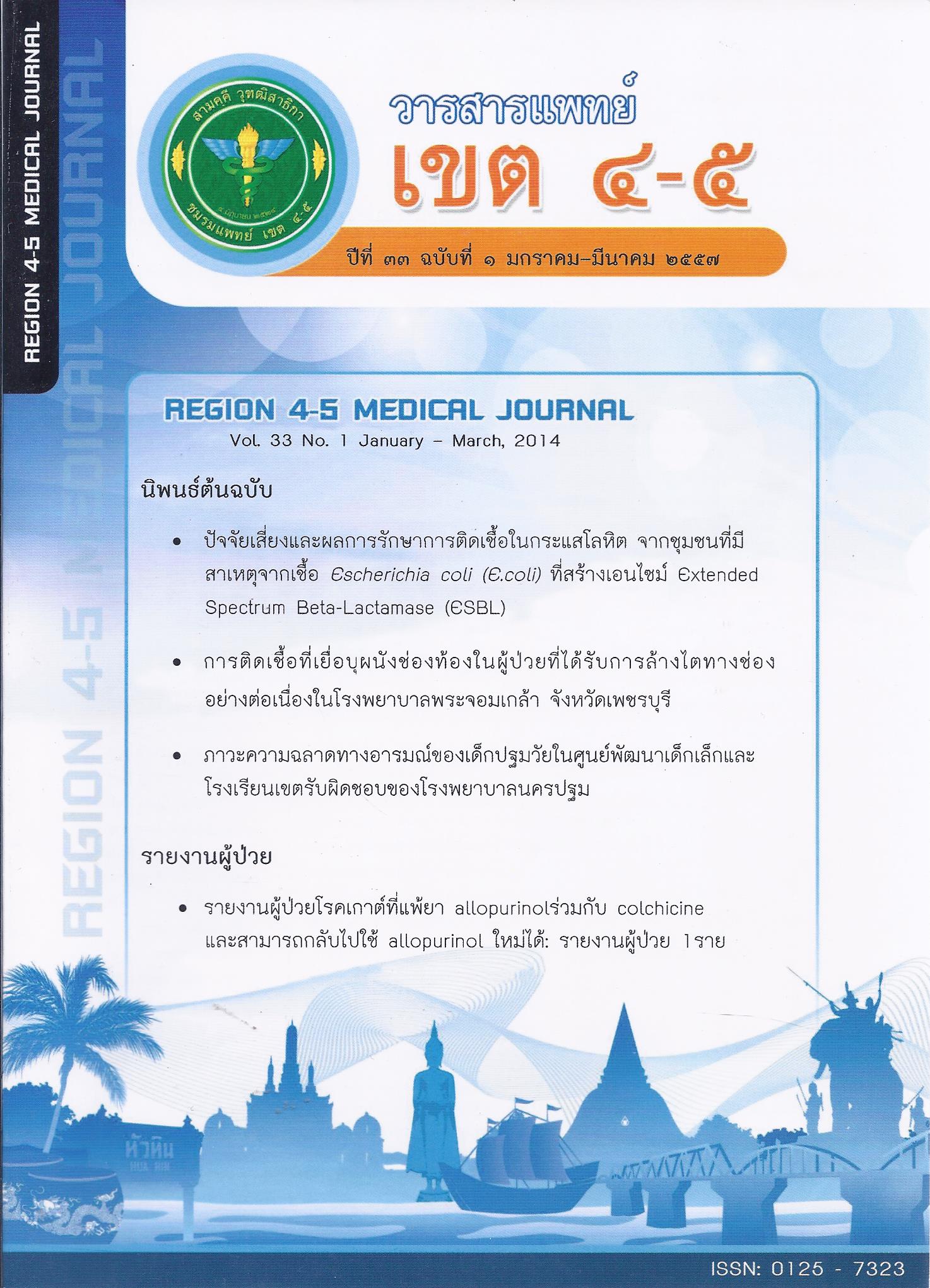การเปรียบเทียบการใช้ดัชนีความเสี่ยงในการทำนายมะเร็งรังไข่
บทคัดย่อ
Objective: To evaluate the ability of two malignancy indices (RMI 1 and RMI 2) incorporating ultrasound
finding, menopausal status and serum CA 125 level to discriminate between benign and malignant ovarian
masses.
Materials and methods: Two risk of malignancy indices (RMI 1 and RMI 2) based on ultrasound finding,
menopausal status and serum CA 125 level were used on, ninety-two patients admitted between October 2010 and September 2013 for the surgical excision of ovarian masses. To diagnose for ovarian malignancy
sensitivity, specificity, positive predictive value (PPV), and negative predictive value (NPV) of serum CA 125,
RMI 1 and RMI 2 were compared.
Results: A total of 26 patients (28.3%) presented with malignant pathology while 66 (71.7%) with
benign pathology. Prevalence of malignancy increased as age and ultrasound score increased. Both variables, age and ultrasound score, were statistically significant at 0.05 level. Additionally, more postmenopausal than premenopausal women suffered from malignant disease were statistically significant at 0.05 level. The results of serum CA 125 used to distinguish benign and malignant masses pre-operatively at a cut off level of 35 U/ml, with a sensitivity of 80.8%, a specificity of 39.4%, a PPV of 34.4%, and a NPV of 83.9%. In predicting of malignancy, based on ROC curve evaluation, the study found that RMI 2 at a cut off level of 100 resulted in a sensitivity of 80.8%, a specificity of 60.6%, a PPV of 44.7%, and a NPV of 88.9%.
Conclusion: RMI is a simple, easily applicable method for the primary evaluation of women with
ovarian masses. RMI 2 was more reliable in discriminating between benign and malignant ovarian masses
than RMI 1.
ดาวน์โหลด
เผยแพร่แล้ว
รูปแบบการอ้างอิง
ฉบับ
ประเภทบทความ
สัญญาอนุญาต
ลิขสิทธิ์บทความเป็นของผู้เขียนบทความ แต่หากผลงานของท่านได้รับการพิจารณาตีพิมพ์ลงวารสารแพทย์เขต 4-5 จะคงไว้ซึ่งสิทธิ์ในการตีพิมพ์ครั้งแรกด้วยเหตุที่บทความจะปรากฎในวารสารที่เข้าถึงได้ จึงอนุญาตให้นำบทความในวารสารไปใช้ประโยชน์ได้ในเชิงวิชาการโดยจำเป็นต้องมีการอ้างอิงถึงชื่อวารสารอย่างถูกต้อง แต่ไม่อนุญาตให้นำไปใช้ในเชิงพาณิชย์




